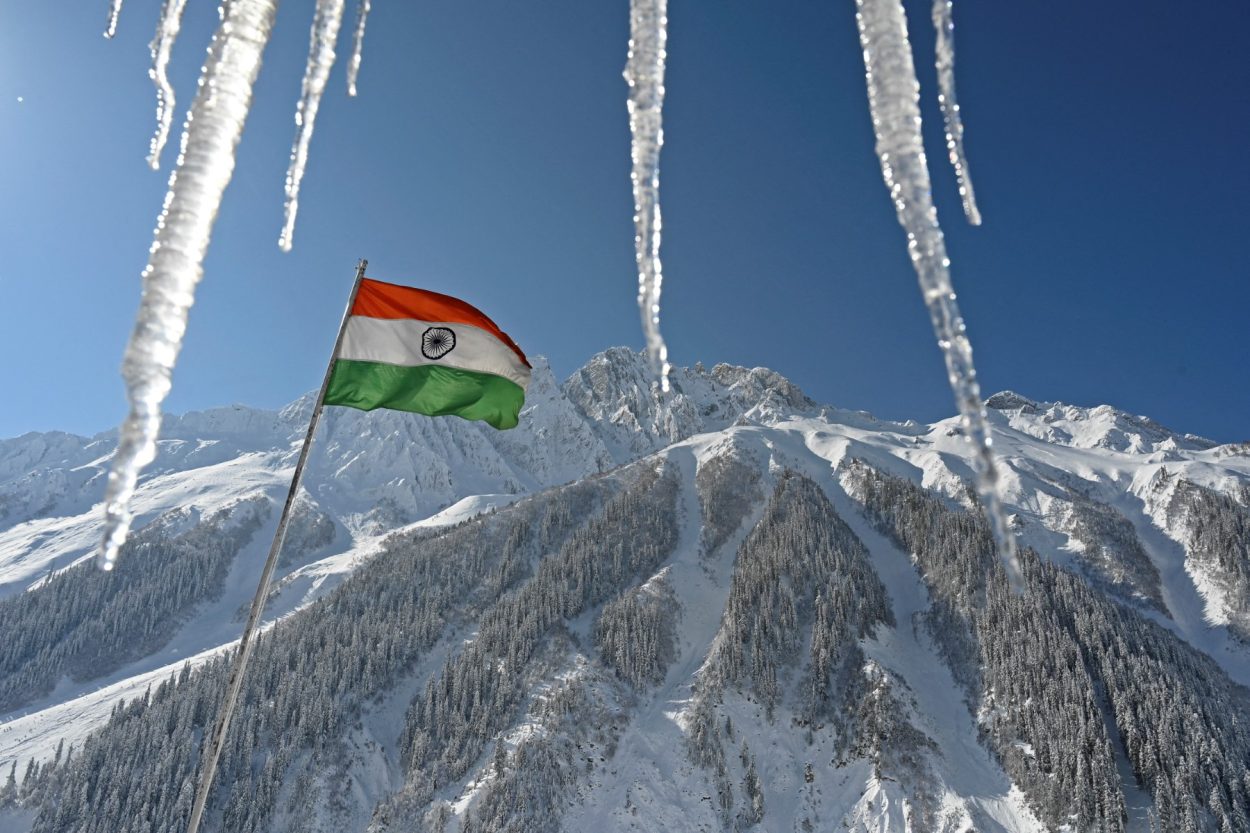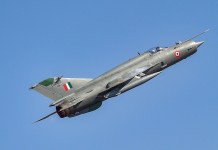On August 5, 2025, India’s Defence Acquisition Council (DAC), led by Defence Minister Rajnath Singh, approved several critical capital procurement proposals to enhance the Indian Armed Forces’ capabilities.
A standout decision was the Acceptance of Necessity (AoN) for advanced mountain radars for the Indian Air Force (IAF). These radars are designed to enhance air surveillance in rugged, high-altitude border regions, addressing operational challenges posed by complex terrain, such as valleys and ridgelines.
This move marks a significant step in modernising India’s air defence and surveillance infrastructure, particularly along contested mountainous borders.
With the AoN secured, the following steps include issuing a Request for Proposal (RFP) and finalising contracts. The Defence Acquisition Council’s 2025 approval for additional mountain radars reflects India’s strategic focus on bolstering layered surveillance.
These new radars would enhance early warning systems and airspace monitoring, fortifying India’s defence capabilities in strategically sensitive areas.
Mountain Radars
Mountainous regions present unique challenges for military surveillance and air defence due to uneven terrain, extreme weather conditions, and logistical constraints. Mountain radars, specialised systems designed to overcome these hurdles, are critical for maintaining airspace security in high-altitude environments.
Mountain radars are sophisticated radar systems engineered for dependable operation in rugged, high-altitude terrains. Unlike conventional radar systems, which are generally optimised for flat or coastal regions, mountain radars are specifically tailored to operate effectively within such environments.
These systems address challenges related to fragmented lines of sight, severe environmental conditions, and logistical obstacles. Their principal purpose is to detect aircraft, drones, helicopters, and even ground vehicles that may utilise terrain features to evade surveillance, thereby ensuring comprehensive airspace monitoring in difficult terrains.
Mountain radars function on principles analogous to those of traditional radars, emitting electromagnetic pulses and analysing their reflections.
Nonetheless, they employ sophisticated algorithms to address terrain-specific challenges. Techniques such as Doppler Filtering are used to differentiate moving targets from static ground clutter. Multi-beam scanning enables the simultaneous tracking of multiple targets, and Clutter Suppression is utilised to eliminate false echoes from rugged landscapes.
Operators are provided with real-time updates, including automated alerts for fast-moving or low-flying threats, such as drones or helicopters that may be concealed within valleys.

India’s Mountain Radar Program
The Indian program plays a crucial role in securing its Himalayan borders along the Line of Actual Control (LAC) and Line of Control (LOC). It addresses aerial threats in rugged terrain by deploying advanced radar technology.
A key component of this initiative is the DRDO-developed Aslesha Mk I, a three-dimensional, low-level, lightweight radar designed for rapid deployment and ease of transportation. This radar system effectively tracks fighter aircraft, drones, and low-flying helicopters across a range of altitudes, even in complex mountainous environments.
Its multi-target tracking capability enhances situational awareness, rendering it an essential asset for the Indian Air Force in continuous border surveillance.
By integrating indigenous systems such as the Aslesha with international technologies, India ensures redundancy and comprehensive coverage, thereby strengthening its defence posture.
This program underscores India’s commitment to utilising advanced radar systems to maintain vigilance and respond effectively to emerging threats in the geopolitically sensitive Himalayan region, thereby safeguarding national security.
Core Technologies & Features
Modern mountain radars incorporate cutting-edge technologies to meet operational demands:-
- 3D Surveillance: Unlike older 2D radars that track only range and direction, systems like the DRDO Aslesha Mk I provide 3D tracking—capturing azimuth, elevation, and range. This is vital for identifying threats at varying altitudes in mountainous regions.
- Phased-Array Antennas: Using electronically steerable beams, these radars scan rapidly without mechanical movement, enabling quick detection of threats from unpredictable directions.
- Portability and Modularity: Lightweight and transportable by road, helicopter, or all-terrain vehicles, systems like the Aslesha can be deployed to remote outposts or even airdropped for rapid setup.
- All-Weather Performance: Robust enclosures and advanced signal processing ensure operation in extreme conditions, filtering out environmental noise like snow or rain.
- Network Integration: These radars connect to broader air defence networks, combining data from multiple sites to eliminate blind spots caused by terrain and create a comprehensive surveillance picture.
Deployment Strategies
Effective radar deployment is essential for optimal surveillance and defence. It involves selecting high, accessible sites, such as peaks, for maximum coverage and ease of maintenance. Mobility through portable systems allows quick repositioning against threats, giving an edge over stationary systems.
Infrastructure, including generators, batteries, solar panels, and secure satellite or radio links, supports remote operation. Redundancy with overlapping units ensures continuous coverage, thereby reducing risks associated with malfunctions or enemy interference.
Following these principles enhances situational awareness, flexibility, and reliability, crucial for modern defence in dynamic, contested environments.
Strategic Significance
Mountain radar systems are essential for defending disputed or poorly defined borders, especially in rugged terrains characterised by’ shadow zones” susceptible to exploitation by adversaries. These systems effectively bridge critical coverage gaps, ensuring that no aircraft or drone remains undetected, even within complex mountainous regions.
By providing early warning capabilities, they facilitate prompt responses to aerial incursions, thereby enhancing situational awareness and operational preparedness. Furthermore, mountain radars act as a deterrent against advanced unmanned aerial vehicles (UAVs) and reconnaissance threats, thereby countering potential aggressions.
Their incorporation into national air defence frameworks fosters a unified security network, transmitting real-time data to central command for coordinated action. This strategic importance is particularly accentuated in geopolitically sensitive zones, where sustained vigilance is imperative.
Through the mitigation of blind spots and the enhancement of defence mechanisms, mountain radars play a crucial role in protecting national sovereignty and ensuring resilient border security within challenging environments.
Challenges
Mountain radars, despite their advanced capabilities, face significant difficulties in deployment and operational effectiveness. Terrain shadows persist as a substantial issue, as rugged landscapes create coverage gaps that low-flying threats, such as drones or stealth aircraft, can exploit.
These blind spots require innovative solutions to achieve comprehensive surveillance. Electronic warfare presents another obstacle, with adversaries utilising sophisticated jamming techniques to impair radar functionality, thus demanding robust countermeasures such as frequency hopping and anti-jamming technologies.
Furthermore, environmental degradation in harsh mountain climates — characterised by extreme temperatures, snow, and wind — accelerates equipment deterioration, necessitating frequent maintenance and resilient design solutions to sustain operational reliability.
These challenges underscore the necessity for ongoing technological advancements and strategic planning to enhance radar effectiveness. Addressing terrain limitations, countering electronic threats, and ensuring durability under extreme conditions are essential for maintaining adequate border security and situational awareness in contested mountainous regions.
Future Trends
The future of mountain radar technology is poised for transformative advancements to enhance border security. Multi-static networks are emerging as a key innovation, utilising multiple transmitters and receivers to eliminate blind spots caused by rugged terrain, ensuring comprehensive coverage.
Passive radars represent another leap, leveraging ambient commercial signals—such as TV or cellular broadcasts—for stealthy, energy-efficient detection that is harder for adversaries to jam or detect. UAS integration is also gaining traction, with radars mounted on unmanned aerial systems enabling mobile, adaptive surveillance that can be rapidly repositioned to respond to dynamic threats.
These innovations promise greater resilience against electronic warfare, improved detection of low-flying or stealth threats, and enhanced operational flexibility.
By integrating these cutting-edge technologies, future mountain radar systems will bolster situational awareness, close coverage gaps, and strengthen defence capabilities in challenging, contested environments, ensuring robust security along geopolitically sensitive borders.
Conclusion
Mountain radars are essential for safeguarding airspace under challenging terrains, integrating advanced electronics, portability, and network connectivity to address contemporary threats.
Systems such as the DRDO Aslesha Mk I exemplify this capability, offering India improved surveillance along its mountainous borders. As geopolitical tensions and aerial threats escalate, mountain radars will continue to advance, ensuring robust defence in some of the world’s most challenging environments.
- Air Marshal Anil Khosla is a former Vice Chief of Air Staff (VCAS) of the Indian Air Force and AOC in C of Eastern Air Command.
- He tweets at: @AnilKhosla16




